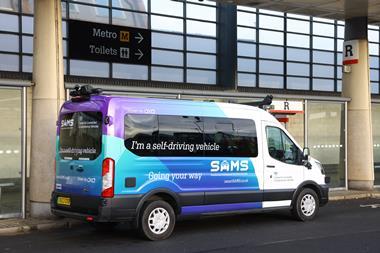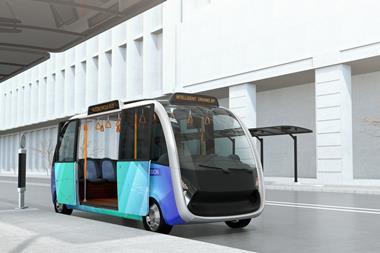New research out of Australia has provided yet more evidence of the risks insurers will have to consider when truly autonomous vehicles hit the roads
By Jon Guy
As the UK continues to work towards the implementation of autonomous driving, insurers are still struggling to keep up with the science and – it seems – the risks.

In April this year, the UK became the first country in Europe to allow Ford’s electric Mustang Mach-E to operate on its roads.
The Mustang Mach-E features Ford’s Blue Cruise driving assistance technology, which allows drivers to let go of the steering wheel on certain motorways.
However, the Ford is not a fully autonomous vehicle. The Society of Automotive Engineers classifies six levels of autonomy and the Mach-E has been described by its manufacturer as a “level two or two plus” system.
Its system requires drivers to keep an eye on the road at all times. Several cameras and infrared sensors monitor the driver’s eyes, even if the driver is wearing sunglasses. When it detects that the driver has looked away for 10 seconds or more, a voice alert will be triggered.
This week (22 August 2023), researchers in Australia have warned that as the autonomy of driving systems increases, so do the reaction times of the humans behind the wheel when reacting to an emergency.
The time when those in the vehicles being able to work, use social media, or simply close their eyes and relax looks to be a very long way off, according to the team at RMIT University in Australia.
Reaction time
Those features classed under levels one and two – such as lane keeping, automated parking and cruise control – are already commonplace.
Read: Autonomous vehicles will allow insurers to become ‘disruptors’
Read: Data depth for zero-occupancy autonomous vehicles ‘incomparable’ – Apollo Group
Explore more motor-related content here or discover other news analysis stories here
When moving to levels three and four, human drivers will still need to respond in an emergency and researchers at RMIT found that the reaction times for those who were carrying out other tasks in the vehicle were considerably slower than those who had to drive the vehicles without the support of the technology.
The longer the driver rested or carried out a task other than driving before the simulated emergency, the slower their reaction times.
Insurers have been struggling to get ahead of the curve when it comes to autonomous technology and the UK government’s reluctance to pass detailed regulation has not helped.
It is likely that the necessary parliamentary act will not be passed until after the next general election. Insurers cannot afford to stand still however, as once the regulations are in place the speed of introduction for more sophisticated autonomous vehicles will be cosiderable.
The difference in risk profiles between completely manual and fully autonomous vehicle is immense. The issue for insurers will be how they underwrite the vehicles that demand human interaction to varying degrees.
It is also likely that many of these autonomous and near autonomous models will be electric vehicles, with the industry already fully aware of the new risks EVs have created for insurers and their claims teams.
Hosted by comedian and actor Tom Allen, 34 Gold, 23 Silver and 22 Bronze awards were handed out across an amazing 34 categories recognising brilliance and innovation right across the breadth of UK general insurance.

























































No comments yet